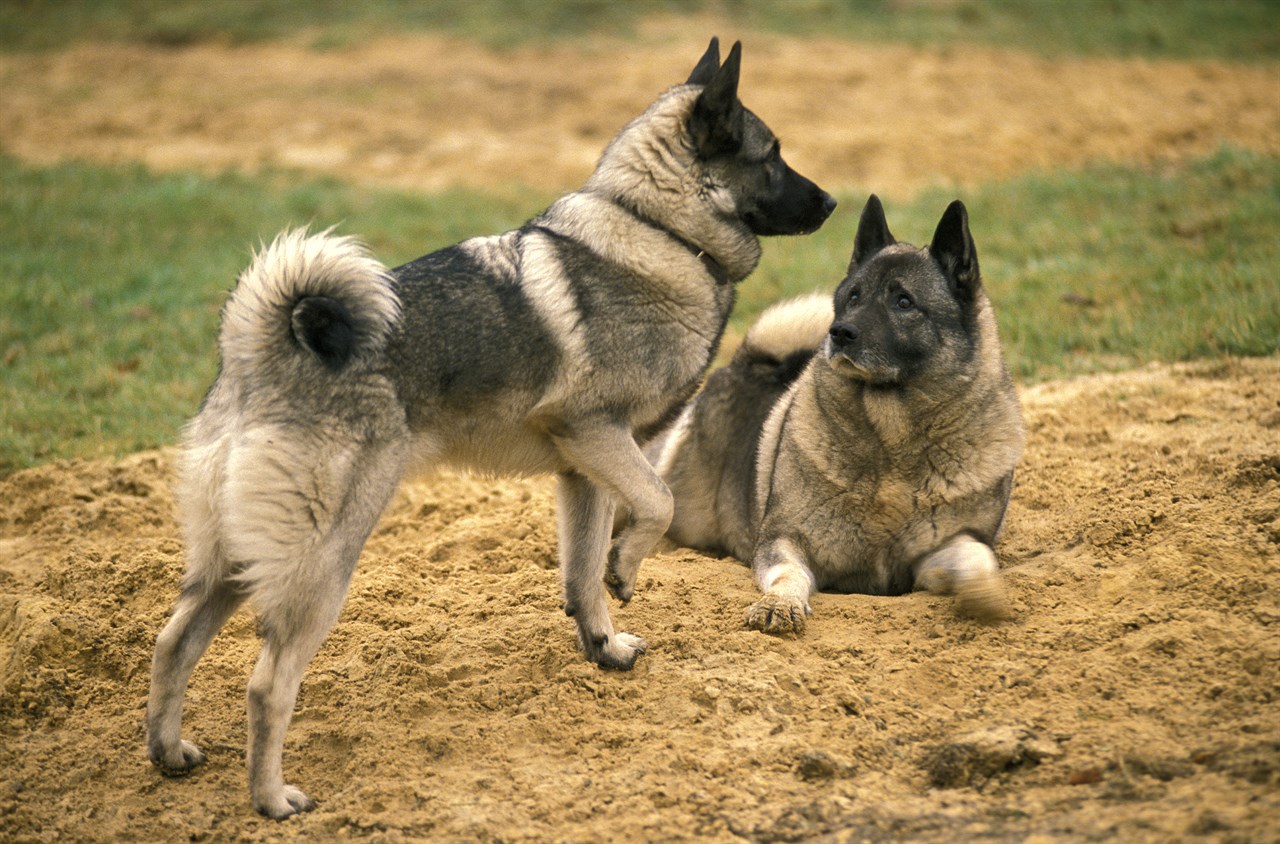The Norwegian Elkhound: A Noble and Ancient Breed

The Norwegian Elkhound, known for its rugged beauty and noble bearing, is a remarkable breed that has captured the hearts of dog enthusiasts for centuries. Renowned for its tenacity, loyalty, and striking appearance, this breed has a rich history that dates back over a thousand years. In this comprehensive exploration, we delve into the Norwegian Elkhound's breed history, its classification within the world of dogs, its size, coat characteristics, colour and appearance, and address common questions that arise about this unique breed.
Breed History
The Norwegian Elkhound, or "Norsk Elghund" in its native Norwegian, is a breed with a long and storied history. Its origins can be traced back to the Vikings, who used these dogs as hunting companions and protectors of their homes and livestock. The breed's primary purpose was to track and hold moose (known as "elg" in Norwegian) at bay until hunters arrived.
The Norwegian Elkhound's ancestors were likely brought to Norway by early settlers and adapted to the harsh Nordic climate over time. They evolved into a hardy, versatile breed capable of thriving in the unforgiving terrain of Norway's forests and mountains.
Also Known As
The Norwegian Elkhound is also known as the Small Grey Elk Dog or Norsk Elghund by lovers of the breed.
Breed Group
The Norwegian Elkhound belongs to the Spitz family of dogs. Spitz dogs are characterised by their distinctive appearance, which includes pointed ears, curled tails, and a thick double coat. This breed's classification within the Spitz family is more specific – it is considered a Nordic or Scandinavian Spitz.
Breed Size
Norwegian Elkhounds are medium-sized dogs with a sturdy and well-balanced build. Adult males typically stand at a height of 51 to 56 centimetres at the shoulder, while females are slightly smaller, ranging from 48 to 53 centimetres. Their weight typically falls between 22 to 25 kilogrammes.
Breed Coat, Colour, and Appearance
One of the most distinctive features of the Norwegian Elkhound is its coat. They possess a thick, weather-resistant double coat that enables them to endure the harsh Norwegian climate. The outer coat is coarse and straight, while the undercoat is soft and dense, providing insulation. This coat's colour is typically a beautiful blend of silver and grey, often with a black-tipped tail and ears. Their facial features are alert, with dark, almond-shaped eyes that exude intelligence and a friendly expression. The breed's ears are erect and triangular, adding to their striking appearance.
Common Questions About Norwegian Elkhounds
Are Norwegian Elkhounds like Huskies?
While both Norwegian Elkhounds and Siberian Huskies have a northern heritage and a wolf-like appearance, they are distinct breeds with different purposes. Huskies are known for their endurance and sled-pulling abilities, while Norwegian Elkhounds were bred primarily for hunting moose. While there may be some similarities in their physical characteristics, their temperaments, energy levels, and historical roles differ significantly.
How close are Norwegian Elkhounds to wolves?
The Norwegian Elkhound's appearance may bear a resemblance to wolves, but they are domesticated dogs with no significant genetic relation to wolves. Over centuries, they were selectively bred for specific hunting and companion traits, resulting in the loyal and sociable breed we know today.
Are Elkhounds rare?
Norwegian Elkhounds are not extremely rare but are considered a relatively uncommon breed in many parts of the world. They are more prevalent in their home country of Norway and other Scandinavian countries, where they are still used for hunting and as family companions. In some regions, they may be less well-known, contributing to their perception as a rare breed.
Are Norwegian Elkhounds the same as Akitas?
Norwegian Elkhounds and Akitas are distinct breeds originating from different regions and serving different historical purposes. Akitas hail from Japan and were bred for guarding and hunting large game, whereas Norwegian Elkhounds originate from Scandinavia and were developed for moose hunting. They have notable differences in appearance and temperament.
Is a Norwegian Elkhound part wolf?
No, Norwegian Elkhounds are not part wolf. They are a purebred dog breed with no significant wolf ancestry. Their resemblance to wolves is a product of their unique appearance and historical function as moose hunting dogs.
Conclusion
The Norwegian Elkhound is a captivating breed with a rich history that reflects its close bond with humans over centuries. Known for its striking appearance, loyalty, and hunting prowess, this breed continues to be cherished by dog lovers around the world. While they may bear a resemblance to other northern breeds and wolves, their distinct characteristics and lineage set them apart as a breed with a unique heritage and charm. Whether as a dedicated hunting companion or a loving family pet, the Norwegian Elkhound remains an enduring symbol of Norway's rugged beauty and enduring spirit.
Continue reading our Norwegian Elkhound in-depth articles
- Norwegian Elkhound Temperament and Behaviour
- Norwegian Elkhound Training and Socialisation
- Norwegian Elkhound Toilet Training
- Norwegian Elkhound Barking Habits
- Norwegian Elkhound Grooming Requirements
- Norwegian Elkhound Shedding Behaviour
- Norwegian Elkhound Sleeping Behaviour
- Norwegian Elkhound Diet and Feeding Requirements
- Norwegian Elkhound Average Lifespan
- Norwegian Elkhound Exercise Requirements
- Norwegian Elkhound Common Health Issues
- Norwegian Elkhound Suitability Guide
- Norwegian Elkhound Advantages
- Norwegian Elkhound Disadvantages
- Norwegian Elkhound Cost to Buy and Own
- Norwegian Elkhound Clubs and Links
- Selling Norwegian Elkhound Puppy Litters and Dogs
- Buying Norwegian Elkhound Puppies and Dogs
- Norwegian Elkhound Alternatives
Norwegian Elkhound puppies for sale
- Find Norwegian Elkhound puppies for sale in ACT
- Find Norwegian Elkhound puppies for sale in NSW
- Find Norwegian Elkhound puppies for sale in NT
- Find Norwegian Elkhound puppies for sale in QLD
- Find Norwegian Elkhound puppies for sale in SA
- Find Norwegian Elkhound puppies for sale in TAS
- Find Norwegian Elkhound puppies for sale in VIC
- Find Norwegian Elkhound puppies for sale in WA